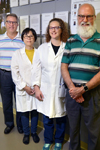 Banas and Drake Team Up to Study the Role of Oral Streptococci in the Early Stages of Dental Decay Dec 07, 2018 Some things just go together! Peanut Butter and Jelly. Batman and Robin. Banas and Drake. Dr. Jeff Banas is a professor of microbiology in pediatric dentistry and the Iowa Institute for Oral Health Research and the director of graduate studies for oral health science. Dr. David Drake is a professor of microbiology in endodontics and the Iowa Institute for Oral Health Research. With strong rapport and over a decade of collaboration, these two researchers have become known for their work together on the cariogenic roles of oral Streptococci and the oral microbiome. “When one of us presents our research, most people just assume that the other was involved in the project,” said Drake with a chuckle. Their work together was rewarded in 2018 when the National Institutes of Health awarded them a five-year $2.6 million grant. For this project, Banas and Drake are examining young children with a high risk of early childhood tooth decay for a particular kind of plaque bacteria, Streptococci. “The hypothesis for decades has been that certain plaque species have unique acidic properties, particularly Streptococcus mutans and sobrinus, and these are responsible for a large proportion of dental decay, but other low-pH plaque species may blaze the trail for these bad species of Streptococcus,” Banas explained. Although this has been the theory, there is sparse evidence for the roles of highly acidogenic (low pH) streptococcal species besides S. mutans and S. sobrinus. That’s where Banas and Drake come in. During preliminary investigations on banked plaque samples, they isolated two common streptococcal species that were among those thought to possess the low pH phenotype that can make the oral microbiome a more suitable environment for the tooth-decay-causing species of plaque. “The problem was that the various species die at different rates in the frozen state, so the banked samples were less than optimal,” said Banas. As a result, Banas and Drake decided to propose and were awarded a grant for an 18-month longitudinal study of 130 children between the ages of 1 and 3, many of whom have a high risk of dental decay. Each participating child will be examined four times over the course of the study so that the team can track the changes in the low pH streptococcal population as well as other changes in the plaque microbiome. “We will be able to see how the low pH populations fluctuate and shift the microflora, which helps the bad species of Streptococcus become more dominant, especially for children with high-sugar diets,” Drake said. Then, the team will sequence the genome of specific low pH species of Streptococcus that were identified in their longitudinal study.
And that would be an important step for improving oral health. “Once the disease process begins, it can be stopped but it is much more difficult after the microbiome has been transformed.” That’s one reason why it’s so important for parents to take their children to the dentist at a young age. Knowing the makeup of the oral microbiome could have other long-lasting implications. For example, prebiotics and probiotics could be designed to help good bacteria in the mouth while preventing bad forms from flourishing. “Prebiotics could feed the good guys, just as sugar feeds the bad guys,” Drake quipped. As Banas and Drake embark on another research project together, each of the two has really come to appreciate what the other brings to the table. “We really work well together; we are much stronger together than we are individually,” Banas said. “It’s so important to see things from other perspectives, and this type of collaboration helps us leverage our talents to get even more support,” Drake added. |
 Dr. Fabricio Teixeira Recognized for Some of the Most Highly-Cited Publications in Regenerative Endodontics Nov 30, 2018 Dr. Samira Adnan and Dr. Rizwan Ullab published a paper in the Journal of Endodontics that detailed their bibliometric analysis measuring the research productivity, author performance, and manuscript impact in the field of regenerative endodontics. The article, “Top-cited Articles in Regenerative Endodontics: A Bibliometric Analysis,” identified and evaluated the main characteristics of the 100 most cited articles in the endodontic literature. Dr. Fabricio Teixeira (DEO and professor, endodontics) had 2 articles in the top 10 and a total of 7 articles in the top 45 most cited. The sixth most-cited article was by “Thibodeau B, Teixeira F, Yamauchi M, et al. Pulp revascularization of immature dog teeth with apical periodontitis. J Endod 2007; 33:680–9” (with 144 citations). In one of the articles graphics, the authors showed the collaboration network among the authors who had contributed to 5 or more articles of the top-cited articles (Figure 4 of the linked paper above).
|
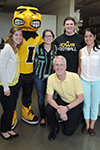 Academic-industry collaboration customizes head and neck cancer treatment Nov 02, 2018 We are all as unique as our fingerprints. When squamous cell cancer of the head and neck strike—as they do on average 51,000 times each year—we need treatments tailored for our specific genetic makeup. Dr. Kim Brogden, professor in the Department of Periodontics, and director of the Iowa Institute for Oral Health Research, and his research team are tackling this head-on in partnership with a precision medicine company, CellWorks, Inc., to identify the best available treatments for genetic variations of squamous cell cancers. For each genetic variation, “CellWorks creates a data set including each signal and cell pathway from stimulus to output, and this data set is used to create a computational model of the cell,” Brogden said. “This model can then identify how cells with different mutations respond to treatment.” The problem, however, was that CellWorks needed to ensure that their model was accurate. That’s where the collaboration with Brogden’s lab began.
According to Dr. Shireen Vali and Taher Abbasi, the cofounders of Cellworks, Brogden’s lab work has greatly improved their model’s predications and has been “… key to establishing a precision medicine computational workflow which takes patient DNA/RNA information as inputs and personalizes treatment.” The models were validated in 80 to 90 percent of cases, and because of this research, oncologists have a new tool for determining the best treatment for a patient based on the specific genetic makeup of the patient’s tumor, rather than using a trial-and-error method that has a success rate of only 25 percent. “We would know which treatments are likely to be ineffective,” Brogden said, “and we can avoid subjecting patients to severe side-effects, including autoimmune diseases, inflammation, and infection. Going forward, we may even be able to prevent cancer with these models.” The end goal is to develop a holistic system of computational models that would learn and adapt as new scientific information is added. “We often think of science as a linear progression, but with the breadth of research being conducted today, it can be hard to see science that way,” Brogden said. The hope is that these models can help restore that linear progression, taking all of that information, organizing and making sense of it so that it can inform decision-making and clinical outcomes. The progression of science, however, is not just about research; it also requires that we train the next generation of scientists. And that’s what Brogden is most proud of in his career. One of his greatest accomplishments at the University of Iowa, he says, is that of the 68 articles he’s published during his 15 years at the University of Iowa, his students have been the first author on 45 of them, and nine of them had four or five students as authors. Dr. Teresa Marshall, the director of the Dental Student Research Program, speaks glowingly of Brogden’s excellence as a mentor. “His students are well trained and function together as a team,” said Marshall, which allows them “to generate high quality research, which makes them very competitive for local and national awards,” she added. Dr. Amber Bates and Dr. Paula Gomez Hernandez are two such students. Bates just defended her dissertation last spring after working in Brogden’s lab for five years, and she is now a postdoctoral research associate in a cancer research center at the University of Wisconsin.
Brogden, Bates said, “… is the type of mentor that everyone wishes they had, but are actually quite hard to find. Dr. Brogden realizes the benefits of transferrable skills and encourages his students to become effective communicators and develop a range of laboratory skills.” Training the whole person—as a researcher, scientist, communicator, writer, and team member—is a hallmark of Brogden’s approach. “Amber Bates is a great sign of success,” Brogden said as he beamed with pride. “Sending her on to an elite cancer research center shows what an excellent researcher she’s become.” Gomez Hernandez, now a pediatric dentistry resident at the University of Iowa, completed her D.D.S. last spring and was a part of Brogden’s lab for the past four years in the Dental Student Research Program.
For Gomez Hernandez, Brogden’s lab has made a great difference for her. She plans to stay involved in cancer research as she goes on to practice pediatric dentistry. Like Bates, Gomez Hernandez sees Brogden as a mentor far beyond the lab. “He has taught me how to learn from every step in a research project. Even from unexpected results—to see the good that can come from even those circumstances. I think that’s made a difference for me professionally.”
|
 Dr. Peter Damiano appointed as the Morris Bernstein Professor Oct 19, 2018 On Friday, September 8, the College of Dentistry and Dental Clinics was delighted and honored to announce Dr. Peter Damiano as the new Morris Bernstein Professor of Dentistry. Dr. Morris Bernstein (D.D.S., 1939) practiced as a dentist for several decades after receiving his D.D.S from the University of Iowa. Dean David Johnsen explained, “Dr. Bernstein was committed and fond of his patients. He showed me a very thick book of notes from admiring patients upon his retirement.” Likewise, Dr. Bernstein was passionate about his commitment to the college. He provided a significant financial gift to support the mission of the college. Since research is a top strategic priority of the college, the Bernstein Professorship is dedicated to supporting that part of the college’s mission. According to Dean Johnsen, “Peter Damiano exemplifies the spirit Dr. Bernstein valued: Commitment to students, the oral health of our state and country, curiosity and rigor in studying and developing health policy. He has been relentless in these pursuits, including the mentoring of countless colleagues and students (and a few deans).” Graciously, Dr. Damiano said of receiving the honor, ““I am personally very humbled and appreciative of this recognition. It is also a reflection of the outstanding colleagues at the College of Dentistry and Public Policy Center, and others with whom I’ve had the pleasure to collaborate with over the years. I have been very fortunate.” The professorship was first established in 2008. Dr. Damiano is the second professor to hold this chair, following Dr. Deborah Dawson, who was the inaugural Bernstein Professor. |
 Dr. Katsaros and Dr. Avila-Ortiz awarded a $160K grant from Industry Partner Oct 19, 2018 Geistlich Pharma AG awarded Dr. Theodoros Katsaros (the principal investigator; Clinical Assistant Professor and Director of the Advanced Education Program in Periodontics) and Dr. Gustavo Avila-Ortiz (the subinvestigator; Professor and Chair, Department of Periodontics) a $160,000 grant in support of a clinical study, “Clinical, Radiographic and Histomorphometric Analysis of Healing Dynamics in Human Extraction Sockets Grafted with Bio-Oss Collagen®: A Prospective 3-year Post-loading Study.” The purpose of the study is to evaluate the healing of extraction sites in which ridge preservation was performed using Bio-Oss Collagen® at 3, 6 and 9 months post-extraction, as well as possible differences in implant survival and peri-implant tissue stability up to 3 years following delivery of final implant-supported prostheses. Dr. Miguel Romero-Bustillos (first-year Periodontics resident) participated in the conception study and will be responsible for the histomorphometric and radiographic (micro-CT) analysis. Dr. Veeratrishul Allareddy (OPRM) is also a member of the research team. Ms. Karen Kluesner will be the study coordinator. Patient screening and recruitment will begin in November 2018. |
 Delta Dental Awards Dr. Paula Ortega Verdugo a Graduate Student Thesis Grant Oct 12, 2018 The proposed study will survey Iowa dentists to help determine if they are willing to use less invasive caries removal techniques, such as the stepwise removal procedure or selective caries removal, for extensive caries lesions. The study will use Conjoint Analysis, a novel approach in assessing health-care decision-making, and it is the third and final part of Dr. Ortega Verdugo’s dissertation for a Ph.D. in Oral Science. The study aims to assess the decision-making of Iowa dentists regarding alternative caries removal techniques, ultimately providing significant information on dentists’ acceptance of less invasive caries removal methods while helping to identify barriers that prevent dentists from using these methods. Thus, the study will inform decision-makers about the most effective, both in terms of overall health and costs, way to allocate resources by promoting these lower-cost alternative approaches. |
 Dr. Hongli Sun Awarded An Almost $300K Multiyear Grant Sep 28, 2018 Dr. Hongli Sun was awarded a multiyear grant for a project entitled, “Functionalized Nanofibrous Scaffold for Endogenous Bone Regeneration.” The long-term goal of Dr. Sun’s research is to develop an effective strategy to repair and regeneration large bone defects. This work will revolutionize how major bone defects—whether they are caused by breaks or genetic defects, among other causes—can be clinically treated and repaired. This particular project is a step toward designing an effective strategy—a biomimetic gelatin nanofibrous scaffold—for delivering therapeutic molecules at a designated location so that one can more effectively bring out the natural regenerative properties of these tissues. More particularly, Dr. Sun’s team will investigate whether this particular scaffold can modulate endogenous bone morphogenetic proteins and angiogenic signals so that bone defects are repaired and regenerated. Dr. Sun’s research team includes Dr. Brad Amendt, Dr. Kyle Stein, and Dr. Erliang Zeng. |
 Drs. Adil Akkouch, Brad A. Amendt and Liu Hong Awarded A Two-Year $152K Grant Sep 21, 2018 The College of Dentistry’s on-going research in the use of stem cells for growing and regenerating bone material holds great promise for tooth and craniofacial reconstruction. Being able to regrow bone material without the need for extensive reconstructive surgery would revolutionize these fields. Building on this body of research, Dr. Amendt’s research team received a two-year $152,500 R03 grant titled “Hybrid 3D bioprinting of bone using microRNA-based bioink.” The project investigates a novel way to biofabricate vascular bone material by means of 3D bioprinting. That is, the research team will investigate whether a 3D printed osteoinductive construct acting as a delivery system for both for miR-200c and miR-200a inhibitor will safely and effectively regenerate bone by improving osteogenic differentiation and new blood vessel formation. The novel bioink used in the printing will help resolve technical issues that have impeded both gene delivery and the spatial distribution of cell within biofabricated grafts. This project is a fundamental step towards translating miRs gene therapy and 3D bioprinting technology from the laboratory bench to the clinical bedside. Both Dr. Liu Hong and Dr. Adil Akkouch (a former post-doc in the IIOHR) collaborated with Dr. Amendt as part of the research team. |
 Dr. Brian Howe Awarded Prestigious Career Development Research Grant Aug 10, 2018 From Dr. Olin’s initial work to the broad cross-section of researchers currently working on craniofacial development, the College of Dentistry is well known for its cutting-edge research in orofacial clefting. Dr. Brian J. Howe’s (family dentistry) research is building on this legacy—he was awarded a nearly $800,000 five-year grant for a project on orofacial clefting. The grant is for a prestigious Mentored Clinical Scientist Research Career Development Award (K08), and the title of the project is “Identifying Phenomic Patterns of Dental Anomalies in Orofacial Clefting.” Dr. Howe’s previous research (see here and here) investigated how orofacial clefts affect tooth development, and found that children with orofacial clefts have more dental anomalies, such as missing and malformed teeth, than the general population and even their own family members. He also found that impaired tooth development among cleft patients is most likely a physical consequence of the cleft or the surgical repair. Still, the research did not discover whether the impaired development was a result of the surgery or of the cleft itself (or perhaps both) or if the missing or malformed teeth occur in any discernable patterns. This new grant will allow Dr. Howe to further develop this line of research with the aim of identifying underlying causes and patterns of the impairment—i.e., whether impairment is a result of clefting or the surgery to repair the clefting. Finding this root cause could allow either surgeons to address it with improved surgical protocols or researchers to address the genetic factors at play. Drawing on one of the largest sets of data available, Dr. Howe’s research will use novel, multivariable analytical tools and contemporary machine learning algorithms to develop a tool for identifying these patterns and underlying causes. Dr. Howe has teamed up with Dr. Tong Wang (Tippie College of Business), who is an expert in machine learning and data mining, to collaborate on creating a machine learning algorithm (program) to address this research question. Dr. Howe’s primary mentor is Dr. Lina Moreno (orthodontics) and his other mentors are Dr. Deborah Dawson (pediatric dentistry) and Dr. Mary Marazita at the University of Pittsburgh. This award is the first K-award that the College of Dentistry has received in the past decade. |
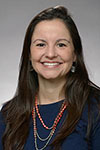 Dr. Erica Teixeira and Dr. Marcos Vargas Received a $22,875 Grant from an Industry Partner Jul 20, 2018 The use of bulk-fill composite has increased among dentists. Purportedly these materials perform just as well as traditional composites resins. Bulk-fill composites can be applied in thicker increments (4-5mm) than other composite resin materials, speeding up the restorative process. One of the significant challenges of this technique is that clinicians must adequately cure these materials, but studies have shown that the depth of cure varies depending on the composite used. Principal Investigators, Dr. Erica Teixeira (Operative Dentistry) and Dr. Marcos Vargas (Family Dentistry), received a $22,875 grant from a German pharmaceutical company, DMG Chemisch-Pharmazeutische Fabrik GmbH, to investigate the depth of cure for four different bulk-fill composites. They will also evaluate how glossy and smooth the surface is for the four materials, and how well their marginal adaptation is to teeth, using a MicroCT scanner. This research is one example of how the College of Dentistry partners with industry to meet the needs of industry while improving the science behind our clinical practices. Dr. Teixeira and Dr. Vargas’ research team includes Dr. Steve Armstrong, and the title of the project is “Performance of different bulk-fill composite materials.” |
 Drs. Kuthy, McKernan, and Reynolds Awarded a Delta Dental of Iowa Foundation Grant to Study Iowa Dentist Workforce Jul 13, 2018 Delta Dental of Iowa Foundation awarded Drs. Raymond Kuthy, Susan McKernan, and Julie Reynolds (Department of Preventive and Community Dentistry) a one-year $40,000 grant entitled “20th Anniversary of the Iowa Dentist Tracking System (IDTS): Assessing Trends.” IDTS is one of five health workforce tracking systems (physicians, dentists, pharmacists, advanced nurse practitioners, and physician assistants) within the Office of Statewide Clinical Education Programs (OSCEP), Carver College of Medicine. IDTS updates information about all active dentists in Iowa semi-annually. This proactive statewide data collection system is the only one of its kind nationally. Besides tracking information about the individual’s entrance or exit from practice in Iowa, OSCEP’s semi-annual contact to each provider’s office updates possible practice changes, such as work arrangement (i.e., solo, group, corporate), gain or loss of associates, hours worked per week, etc. 2016 was the 20th anniversary of IDTS, making for a unique opportunity to complete a detailed longitudinal assessment, using a single comprehensive and consistent data source. The investigators will analyze these data and develop a comprehensive report for stakeholder planning purposes. Topics of particular interest include changes in the workforce’s gender composition, age distribution, hours worked, practice arrangements, and state retention of UI graduates. The research team will also assess trends in geographic variation in the dentist workforce, incorporating the location of physicians to explore for health professional ‘hot spots’ in Iowa. Population maps showing general population shifts during this time period will be overlaid with changes in health care provider location. Findings will inform policy to assist with recruitment and retention efforts, particularly in Iowa's rural areas. |
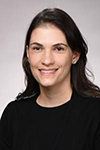 Dr. Vidal Receives Grant from Colgate-Palmolive Jun 15, 2018 Colgate-Palmolive awarded Dr. Cristina Vidal (Operative) a $39,000 grant titled “Development of therapeutic nanoparticles for sustained delivery of proanthocyanidins in adhesives.” The project began in May 2018 and it ends in two years. The research team’s goal is to find a method to deliver a certain plant-derived compound that can preserve, repair, and restore the bond between dentin and resin material. In particular, they will develop a delivery system using mesoporous silica nanoparticles (MSN), and determine the optimal delivery for maintaining a strong resin-dentin bond while mitigating factors that degrade the dentin organic matrix and reduce bond strength. The principal investigator for the project is Dr. Vidal, and her research team includes Dr. Steven Armstrong (Operative), Dr. Aliasger Salem (Pharmacy), and Dr. Julie Jessop (Engineering). |
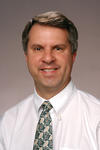 Dr. Banas and Dr. Drake Awarded an NIH five-year $2.6 million grant Jun 08, 2018
Both Dr. Banas and Dr. Drake are excited about the opportunity. "Our understanding of the microbial etiology of dental decay continues to evolve," said Banas, "and we believe this study has the potential for adding considerable new insight into how the streptococci make contributions in both positive and negative ways." Although there is a large body of evidence that confirms an association between a specific kind of streptococci, mutans streptococci (MS), and tooth decay, the association is not absolute. That is, a patient can have a great deal of tooth decay without the presence of MS, and in some cases, a significant amount of MS is present with sound, healthy teeth. Thus, some researches have suggested that non-MS low pH streptococci may explain why the association is not absolute. Dr. Banas and Dr. Drake’s research team will investigate this complex relationship by conducting an 18-month longitudinal study on children ages 1 to 3 who have a high risk of experiencing dental decay so that they can determine how variations in the non-MS low pH streptococci and overall plaque microbiome affect dental decay. Then, the team will sequence the genome of specific examples of non-MS low pH streptococci that were identified in the longitudinal study. In doing so, the team believes that patterns will be found that may provide a basis for improving the prevention and treatment of tooth decay. Dr. Drake said that he is excited to begin the research part of the project once all the paperwork has been completed. The research team includes: Dr. Justine Kolker Dr. Karin Weber-Gasparoni Dr. Deborah Dawson Dr. Ashutosh Mangalam (Dept. of Pathology, Medical School) Dr. Huojun Cao Dr. Min Zhu Derek Blanchette Alissa Villhauer |
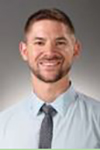 Vislisel Awarded Grant from the American Association of Endodontics Foundation May 18, 2018 Dr. Jered Vislisel, a first-year Endodontics students in the Advanced Program, was awarded an American Association of Endodontics Foundation grant titled Application of Gene-activating BMP-2/FGF-2 Scaffolds for Dental Pulp Capping for the amount of $10,833.49. Dr. Vislisel's mentors are Drs Bruno Das Neves Cavalcanti and Dr. Cristina Vidal (Operative Dentistry). Dr. Aliasger Salem from the College of Pharmacy will also be supporting the research. This study will evaluate the efficacy of gene activating scaffolds for direct pulp capping, more specifically for the BMP-2 and FGF-2 genes, which have been demonstrated as being active in pulp repair and dentin bridge formation. The researchers will use two different approaches: in vitro, on dental pulp stem cell (DPSC) cultures, by evaluating cytotoxicity, mineralization effects (ALP activity and alizarin red staining) and expression of odontogenic markers on DPSCs; and an ex vivo tooth culture model, to assess the reparability induced by these scaffolds when compared to MTA. It is hypothesized that the use of BMP-2/FGF-2 plasmid DNA loaded scaffolds will not induce cytotoxic reaction on DPSC and will promote cell differentiation and formation of mineralized tissue. It is also expected that when applied to an ex vivo tooth culture model, this approach will have results comparable to MTA, currently used as the gold standard for this procedure. |